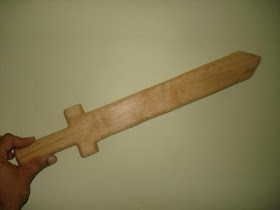Why did I buy the drill
I had an old drill that I had bought for about Rs 900 or so. It was supposed to be an impact or 'hammer drill'. It served me well for its lifetime. Apart from the knobs slowly breaking, a problem I faced was that the drill would not progress through the wall. I tried all sorts of bits, even dipping the bit in water. However I soon realized that the problem was with my drill. It did serve me well for wood, but was not good enough for good quality cement or concrete.
Types of drills.
From information I have gleaned over the net, there are three types of drills.
1.
Normal/Rotary drills : With just a motor.
2.
Impact drills (sometimes called hammer drills or impact drills)
3.
Rotary hammers
The price increases in that order. A normal drill can be got locally for less than Rs 1000. Many are available as 'tool kits' which include the drill, and a lot of hand tools. Impact drills start near Rs 2000, and rotary hammers about 4500 or so and more.
Normal drills just rotate. Impact drills rotate, but the rotating thingy (not sure of the exact technical term) causes a small forward movement of the whole chuck at a very high rpm. In a rotary hammer the forward movment is by a piston. Often a rotary hammr requires a special bit such as an SDS plus bit. This bit can move forwards and backwards within the chuck. A rotary hammer is more powerful for drilling to concrete.
As I already had a drill that could drill through wood, I decided to go in for a rotary hammer. I decided that I had had enough of struggling to get through walls. In fact I used to shy away from drilling on the wall due to the difficulty. Skil has a
rotary hammer drill 1715 which is available for about Rs 4300. This has three modes, drill, hammer + drill, and only hammer mode. I decided however to go in for the
bosch GBH 2-18 RE as I thought this would be a good lifetime investment. I have skil tools but an not very happy with their precision. The bosch drill does not have an "only hammer mode". The only hammer mode can be used to chip away tiles etc, something that I may only rarely do.
Purchase : From
Mach Power tools Chennai. I was pleased with their prompt service. There was however a delay in the part of my local first flight courier office. I hope this is just a one off thing as my local courier has delivered well before
First impressions :
 |
| Bosch GBH 2-18 RE Rotary Hammer box |
A good box. The box reasonably robust and seems to suggest an intent to last as long as the drill it houses. IT is also spacious enough to keep the drill, drill bits, spare chucks as well as other items. Nicely compartmentalized. Now it may seem irrelevant to talk about a drill box, however these things really make a difference while working.
 |
| Bosch GBH 2-18 RE Rotary hammer |
A nice long cable. I have not exactly measured it, but it is much longer than my earlier drill.
Drill stop : A good one. However care has to be taken while using the drill stop in the hammer drill mode, as the drill bit moves forward by at least half an inch. This has to be taken into account.
 |
| SDS plus masonry bit |
Use in concrete : A breeze. Melts through all walls, pillars, cross beams. Yes just as the song love portion number 9 says : I did not know if it was day or night. I started drilling every spot on sight... I tried out the wall, the concrete pillar, as well as a concrete cross beam over the window. It was very very easy, with no strain at all.
 |
| Chuck with SDS plus adapter |
Use in wood : A special
SDS plus adapter is needed for this. I purchased this separately. There was nothing great in its used in wood that sets it apart from other drills.
Final impressions. I think a rotary hammer is very useful tool to have. It simplifies making a hole in a wall. It can be used as a normal drill too. I wish it came with at least one
SDS plus bit, but that will have to be bought separately.



















































